Filter by

Buddhism in Central Asia I: Patronage, Legitimation, Sacred Space, and Pilgri…
The ERC-funded research project BuddhistRoad aims to create a new framework to enable understanding of the complexities in the dynamics of cultural encounter and religious transfer in pre-modern Eastern Central Asia. Buddhism was one major factor in this exchange: for the first time the multi-layered relationships between the trans-regional Buddhist traditions (Chinese, Indian, Tibetan) and tho…
- Edition
- Volume: 11
- ISBN/ISSN
- 978-90-04-41773-1
- Collation
- -
- Series Title
- -
- Call Number
- -

Buddhism in Central Asia III: Impacts of Non-Buddhist Influences, Doctrines
The BuddhistRoad project has been creating a new framework to understand the dynamics of cultural encounter and religious transfer across premodern Eastern Central Asia. This framework includes a new focus on the complex interactions between Buddhism and non-Buddhist traditions and a deepening of the traditional focus on Buddhist doctrines between the 6th and 14th centuries, as Buddhism continu…
- Edition
- Volume: 14
- ISBN/ISSN
- 978-90-04-68728-8
- Collation
- -
- Series Title
- -
- Call Number
- -
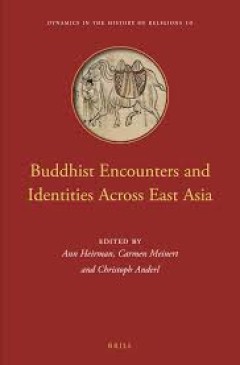
Buddhist Encounters and Identities Across East Asia
Encounters, networks, identities and diversity are at the core of the history of Buddhism. They are also the focus of Buddhist Encounters and Identities across East Asia, edited by Ann Heirman, Carmen Meinert and Christoph Anderl. While long-distance networks allowed Buddhist ideas to travel to all parts of East Asia, it was through local and trans-local networks and encounters, and a diversity…
- Edition
- Volume: 10
- ISBN/ISSN
- 978-90-04-36615-2
- Collation
- -
- Series Title
- -
- Call Number
- -

Bilingual Europe: Latin and Vernacular Cultures - Examples of Bilingualism an…
Bilingual Europe presents to the reader a Europe that for a long time was ‘multilingual’: besides the vernacular languages Latin played an important role. Even ‘nationalistic’ treatises could be written in Latin. Until deep into the 18th century scientific works were written in it. It is still an official language of the Roman Catholic Church. But why did authors choose for Latin or for…
- Edition
- Volume: 239
- ISBN/ISSN
- 978-90-04-28963-5
- Collation
- -
- Series Title
- -
- Call Number
- -
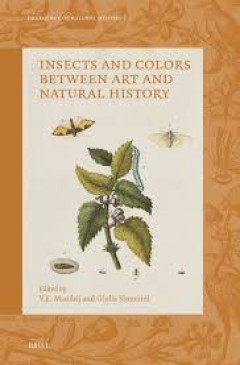
Insects and Colors between Art and Natural History
This book explores how European naturalists and artists perceived, investigated, and presented the relationship between insects and colors from the late sixteenth to the late eighteenth century. The contributors to this volume examine the creative methods and strategies that were developed to record color-related information about insects through studies on Hoefnagel’s glazed metal and hand-c…
- Edition
- -
- ISBN/ISSN
- 978-90-04-68455-3
- Collation
- xviii, 322 pp
- Series Title
- Emergence of Natural History, Volume: 7
- Call Number
- -
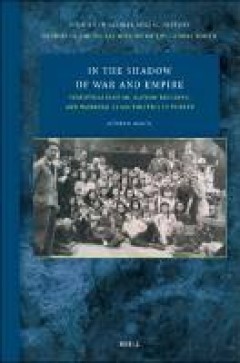
In the Shadow of War and Empire : Industrialisation, Nation-Building, and Wor…
In the Shadow of War and Empire offers a site-specific history of Ottoman and Turkish industrialisation through the lens of a mid-nineteenth-century cotton factory in the “Turkish Manchester,” the name chosen by the Ottomans for the industrial complex they built in the 1840s in Istanbul, which, in the contemporary words of one of the country’s most prominent contemporary Marxist theorists…
- Edition
- -
- ISBN/ISSN
- 978-90-04-68714-1
- Collation
- xviii, 374 pp
- Series Title
- Studies in the Social History of the Global South, Volume: 52/4
- Call Number
- -

In Search of a Path : An Analysis of the Foreign Policy of Suriname from 1975…
The foreign policy of small states is an often neglected topic, which is particularly the case when it comes to Suriname. How did the young Republic deal with its dependency on the Netherlands for development aid after 1975? Was Paramaribo following a certain foreign policy strategy or did it merely react towards internal and external events? What were the decision making processes in defining …
- Edition
- -
- ISBN/ISSN
- 978-90-04-25367-4
- Collation
- xxii, 348 pp
- Series Title
- Caribbean Series, Volume: 27
- Call Number
- -
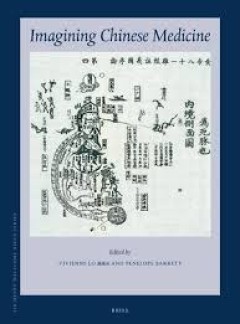
Imagining Chinese Medicine
A unique collection of 36 chapters on the history of Chinese medical illustrations, this volume will take the reader on a remarkable journey from the imaging of a classical medicine to instructional manuals for bone-setting, to advertising and comic books of the Yellow Emperor. In putting images, their power and their travels at the centre of the analysis, this volume reveals many new and excit…
- Edition
- -
- ISBN/ISSN
- 978-90-04-36618-3
- Collation
- xxii, 520 pp
- Series Title
- Sir Henry Wellcome Asian Series, Volume: 18
- Call Number
- -

Imaging and Imagining Palestine : Photography, Modernity and the Biblical Len…
Imaging and Imagining Palestine is the first comprehensive study of photography during the British Mandate period (1918–1948). It addresses well-known archives, photos from private collections never available before and archives that have until recently remained closed. This interdisciplinary volume argues that photography is central to a different understanding of the social and political co…
- Edition
- -
- ISBN/ISSN
- 978-90-04-43794-4
- Collation
- -
- Series Title
- Open Jerusalem, Volume: 3
- Call Number
- -
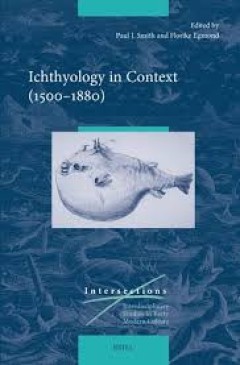
Ichthyology in Context (1500–1880)
Ichthyology in Context (1500–1880) provides a broad spectre of early modern manifestations of human fascination with fish – “fish” understood in the early modern sense of the term, as aquatilia: all aquatic animals, including sea mammals and crustaceans. It addresses the period’s quickly growing knowledge about fish in its multiple, varied and rapidly changing interaction with culture…
- Edition
- -
- ISBN/ISSN
- 978-90-04-68118-7
- Collation
- xxxiv, 742 pp
- Series Title
- Intersections, Volume: 87
- Call Number
- -
 Computer Science, Information & General Works
Computer Science, Information & General Works  Philosophy & Psychology
Philosophy & Psychology  Religion
Religion  Social Sciences
Social Sciences  Language
Language  Pure Science
Pure Science  Applied Sciences
Applied Sciences  Art & Recreation
Art & Recreation  Literature
Literature  History & Geography
History & Geography